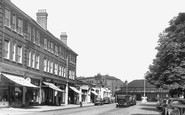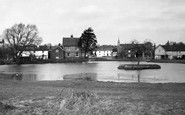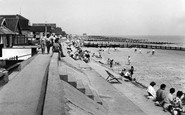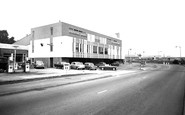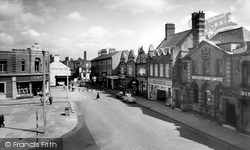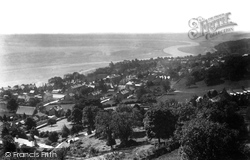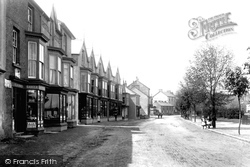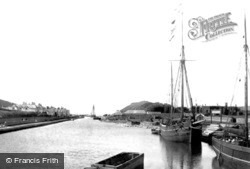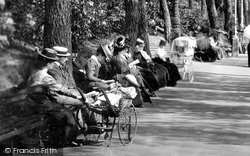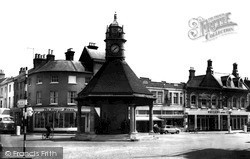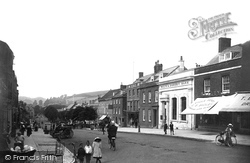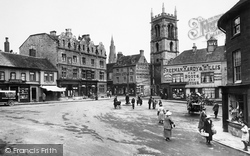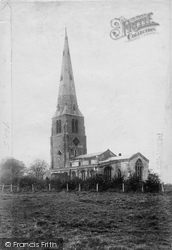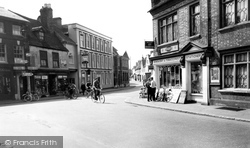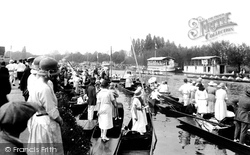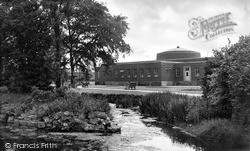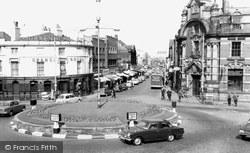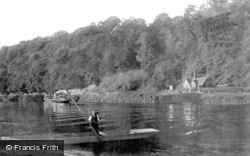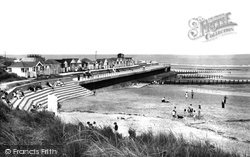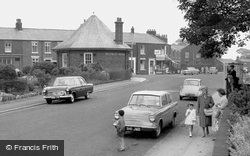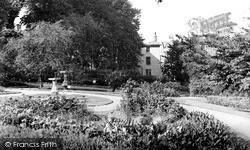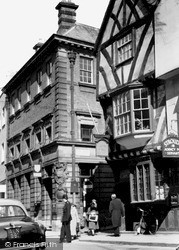Places
3 places found.
Those places high-lighted have photos. All locations may have maps, books and memories.
Photos
68 photos found. Showing results 1,001 to 68.
Maps
12 maps found.
Books
15 books found. Showing results 1,201 to 15.
Memories
7,562 memories found. Showing results 501 to 510.
Toast Rack. Motorcycles.
Where the pushbike is, The Toast Rack cafe was, a favourite place for us 'rockers' to meet for coffee and a smoke (back in the days when we all did). This was the meeting place on a Sunday morning to ride to Box Hill and ...Read more
A memory of Sutton in 1961 by
1939 1949
RE: Holmeleigh Horncastle Childrens Homes and School Years I was in the "Homleigh" from 1939 to 1949. For anyone there at that time I was always known as 'Bunny'. Someone mentioned about two boys getting to London; well, I was one of ...Read more
A memory of Horncastle in 1940 by
Boarding & Quarantine Kennel
I worked at a large boarding & quarantine kennel for a year or two back in the late 60's or early 70's, in the Croydon area and I wondered if anyone remembers the name or even location - or anyone that might have worked ...Read more
A memory of Croydon in 1967 by
The Goat Forty Hill.
I used to play piano in The Goat on Saturday nights, I was only 15, but don't tell anyone! Wally Reid was the Governor, and his son Norman used to play drums too! We lived in Russell Road, number 69, and opposite our house was ...Read more
A memory of Forty Hill in 1951 by
The Tin School And Thurlow Family
I was a pupil at the Tin School in Gilesgate Moor staring in 1954, leaving in 1961. It was at the crossroads of the road that now leads to Tesco, but opposite was the Durham District Services garage where my dad was a ...Read more
A memory of Durham in 1954 by
Burgh Heath
l remember when at the school l was not well, so was taken to Miss Marshall's house and was looked after by her elderly mother (I thought she was so old but probably wasn't). She told me about when they had the tea rooms and there ...Read more
A memory of Burgh Heath in 1958
Completely Changed!!
My father took my mother and I on holiday to Woolacombe every year in the 1950's. At that time, in the height of the Summer months we would be the only family on the main beach (as well as the Barracane Beach where we searched ...Read more
A memory of Woolacombe in 1950 by
Memories
We (me and older brother and sister), stayed in a relatives bungalow really close to the sea several years.. disjointed but strong memories :- - pebble dashed walls - those garden walls made of preformed concrete blocks with patterned ...Read more
A memory of Jaywick
Working At The Bowling Alley
Having returned from Australia, I got a job as controller 4 nights and Sundays, it was a great scene, what with the disco downstairs, the bar upstairs, a barber shop, restaurant, 24 lanes, and a juke box with great ...Read more
A memory of Cippenham in 1966 by
Young Days In Bexley
Other peoples memories are bringing back some of my own. Walking from Bexley to the Regal for Saturday morning movies across the heath. Frog spawn from the river at the mill. Walking to school past the brewery to the little ...Read more
A memory of Bexleyheath in 1945 by
Captions
2,501 captions found. Showing results 1,201 to 1,224.
Further south, High Street opens up to the river, the buildings terminating in an elegant early 19th-century five-storey warehouse with a hipped roof: more like a very tall villa than a warehouse.
Returning to the Square, we are once again looking at Market Street.
We are looking out over Grange to Morecambe Bay from Charney Well Road, which rises steeply above the town. Now, houses occupy the slope in front of the camera.
We are now on the north or Essex bank of the Thames Estuary. This rather quaint view shows the then 'up to the minute' toll booths of the newly-opened Dartford Tunnel.
With the Mumbles Railway carrying as many as 40,000 passengers on a bank holiday, the village prospered. The name 'Mumbles' actually derives from the French 'mamelles', meaning 'breasts'.
To the left of the picture are the grounds of the Staff College; they were fully open to the public, who could enjoy the fine walks and sit by the lakes.
Further along the north bank the Thames passes Chelsea's Cheyne Walk.
The harbour, with the sea lock in the far distance, still exists today, albeit completely altered. The quay to the right belonging to Hockin & Co is now a car park.
The Mansion Family Hotel appears on the extreme left of this picture, taken from the top of Exeter Lane across the Pleasure Gardens.
Many of the shops seen in this picture have gone or changed hands.
This view depicts the bustle in West Steet, with children and cycles, and a flock of sheep being driven uphill (left of centre). Market stalls for animals can be seen between the trees.
North from St Mary's Street, St John's Street leads past St John's Church into Red Lion Square, the market place.
The parish church of St James stands inside a banked enclosure that was once the Bishop of Lincoln's manor. From here his estate of four nearby parishes was managed for more than five hundred years.
This view looks south down Dunstable Street from Market Place; the Moot Hall is on the right with its slender iron-glazed casements.
The Thames, or Isis, plays an important role in Oxford university life.
War Memorial Gardens were laid out to the north of Memorial Avenue between it and the Canch, as this stretch of the River Ryton is known.
We are looking along Grange Road from the corner of Oxton Road.
Past Cliveden is one of the most beautiful stretches of the Thames with its tree-clad river cliffs.
To the north beyond Ingoldmells, and rather more genteel, is Chapel St Leonards, where my mother used to holiday in the 1930s.
On the triangular village green, far left, is the war memorial and another recording the tragedy in August 1944 when an American bomber aeroplane fell on Holy Trinity village school.
Tree-lined, and with lush green river banks, the River Ribble runs through pretty villages and on to Clitheroe, joining with the River Calder and the River Hodder.
Here we are looking along the stretch of the river where the famous Henley Regatta takes place. Viewing platforms can still be seen on each bank.
The gardens behind Bank House, situated in the lower High Street, were given to the town of Stroud in 1930 by Mr Ernest Winterbotham, and were intended as a quiet corner where shop workers could enjoy
This house stands on the corner of Coney Street and New Street. The lower part of the house is now a shop that sells mobile telephones, but the upper storey remains virtually unchanged.
Places (3)
Photos (68)
Memories (7562)
Books (15)
Maps (12)



